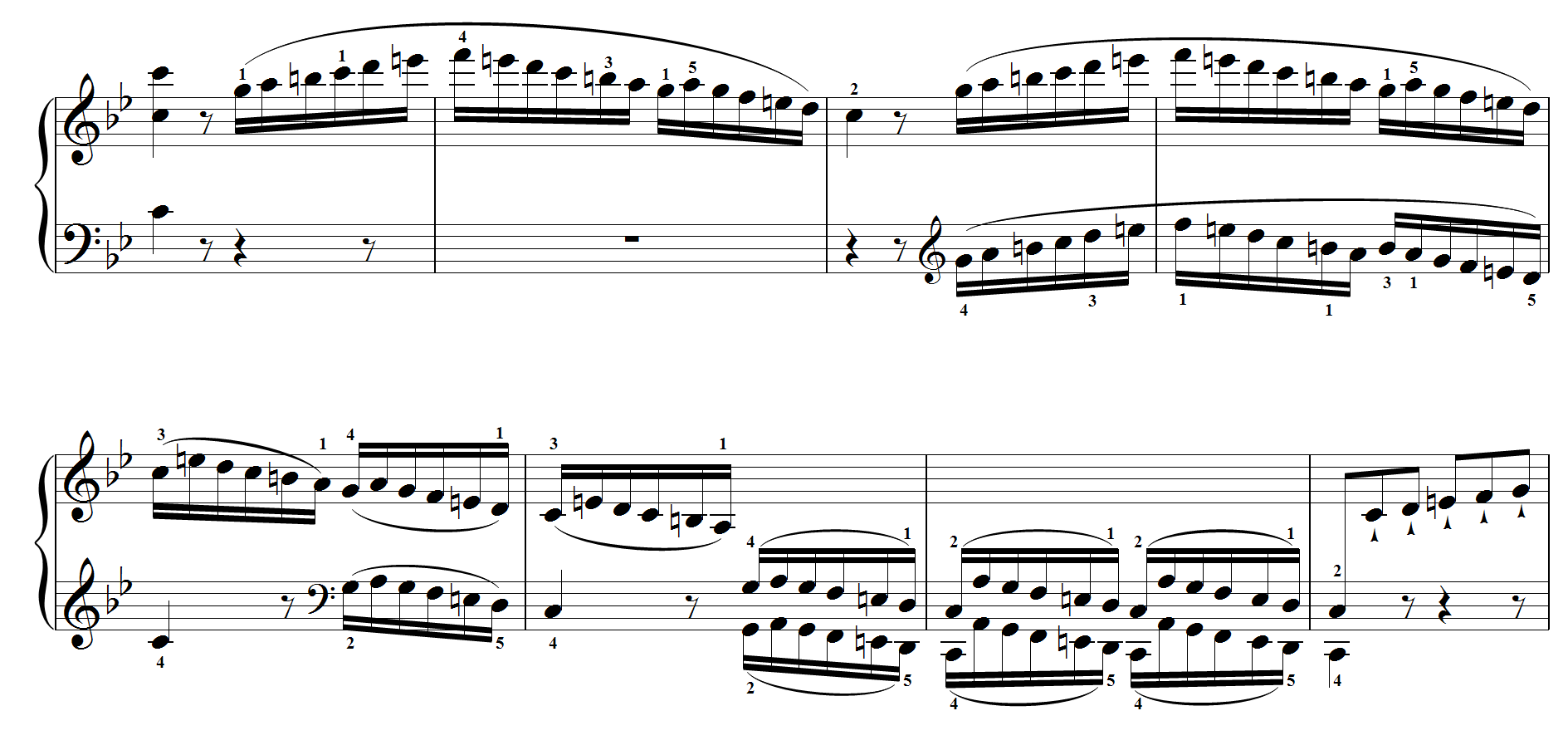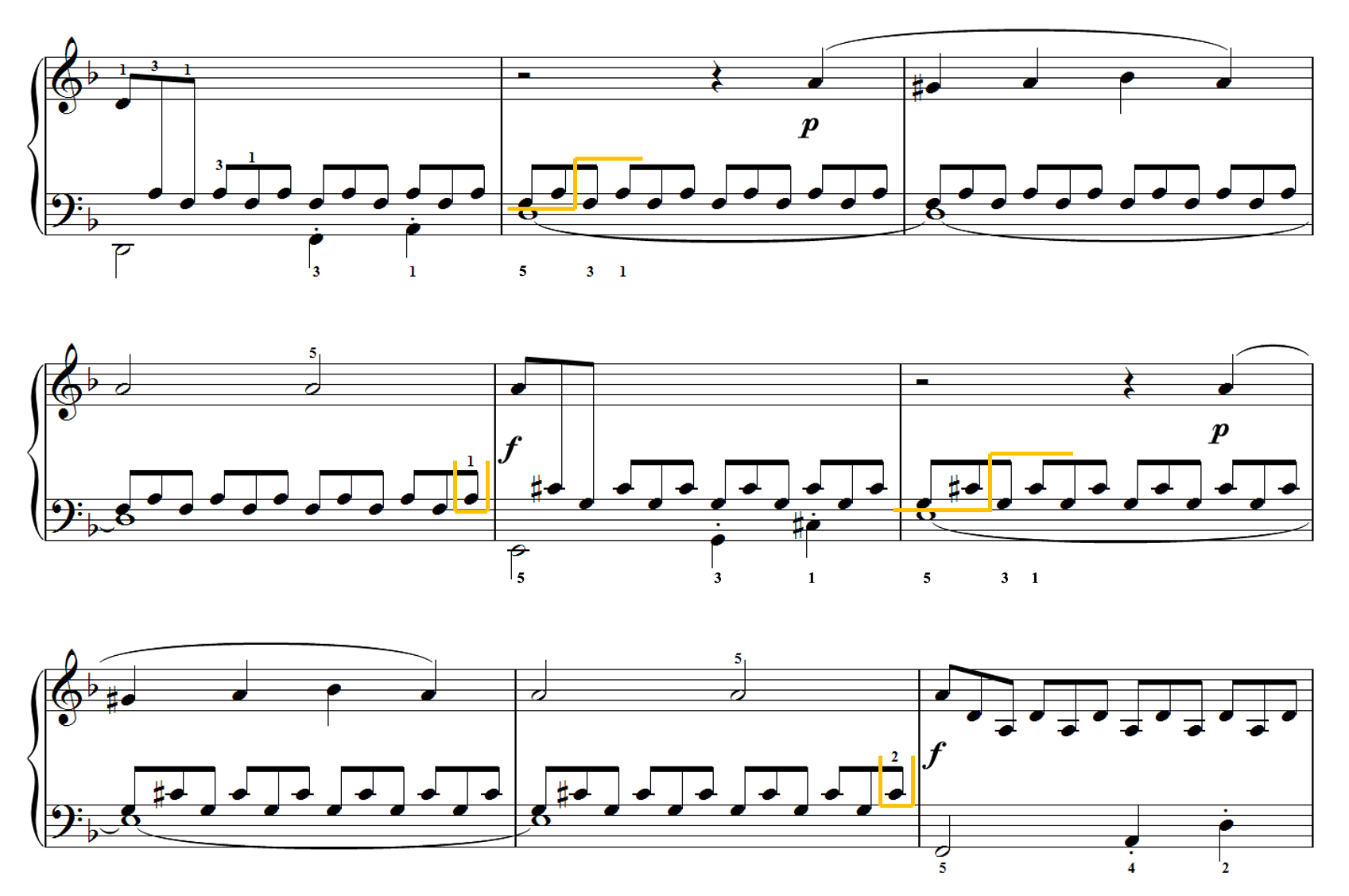Submitted by Michael Lenahan
Published on 1/21/2022

Submitted by Michael Lenahan
Published on 1/21/2022

“This unorthodox fingering is no more difficult to master than more traditional fingerings, but it also has the advantage of making Beethoven's original articulations come out clearly and effortlessly.”
Submitted by Noah Sonderling with thanks to Elisabeth Wright
Published on 10/4/2020

“These redistributions allow for maximum legato connections in as many parts as possible.”
Submitted by Michael Clark
Published on 1/1/2020

“Taking the first notes of each group with the left hand limits the right-hand figure to only two positions.”
Submitted by Michael Clark with thanks to Nancy Weems
Published on 1/1/2020

“I find taking the C in the right hand makes it easier to get my left-hand thumb on G in beat 3.”
Submitted by Michael Clark
Published on 1/1/2020

“Taking the bottom octave in the left hand makes it possible to trill with stronger fingers.”
Submitted by Michael Clark
Published on 1/1/2020

“Changing the pedal with the melodic line allows the left hand to sneak up to take the E-flat from the alto line, freeing the right hand for a more relaxed trill.”
Submitted by Michael Clark
Published on 1/1/2020

“Taking the bottom octave in the left hand makes it possible to trill with stronger fingers.”
Submitted by Michael Clark
Published on 1/1/2020

“The left hand is positioned above the right in mm. 50–51. Taking the G in the right hand in m. 52 eliminates an awkward jump in the left hand and allows the left hand the opportunity to get below the right hand for the rest of the passage.”
Submitted by Michael Clark
Published on 1/1/2020

“The B-flat eighth note evenly divides the left-hand leap, and I find it easier to play it between the E-flat octaves in the left hand than with the right hand.”
Submitted by Michael Clark
Published on 1/1/2020

“The left hand is positioned above the right in the beginning of m. 218. Taking the B-natural in the right hand eliminates an awkward jump in the left hand and allows the left hand the opportunity to get below the right hand for the rest of the passage.”
Submitted by Michael Clark
Published on 1/1/2020

“Taking the final triplet before the leap in the right hand makes the leap more secure.”
Submitted by Michael Clark
Published on 4/18/2020
RH in red, LH in blue

“When the bass is a whole note, hold the pedal for four beats so the bass sustains while the left hand crosses over the right. This redistribution feels more secure to me than the awkward leap involved in trading the triplets between the hands.”
Submitted by Michael Clark with thanks to Robert Roux
Published on 4/18/2020

“The stretch of a seventh between 5 and 2 in the left hand is awkward and unreliable. Taking the the D-sharp with the right-hand thumb facilitates a more secure performance of the left-hand line.”
Submitted by Michael Clark
Published on 4/18/2020

“The leap down to the B-flat is treacherous, and it can be difficult to play it with satisfactory power. Taking it in the right hand eliminates the leap and assures a strong delivery.”
Submitted by Michael Clark with thanks to Robert Roux
Published on 4/18/2020

“Transferring the E-flat and G-flat silently into the left hand frees the right hand for a more melodic performance of the turn with stronger fingers.”
Submitted by Michael Clark
Published on 4/18/2020

“My voicing of the melodic line improves when I play the top F alone and play the bottom F in the left hand.”
Submitted by Michael Clark
Published on 4/18/2020

“With the left hand's help, legato in all voices is possible.”
Submitted by Michael Clark
Published on 4/18/2020